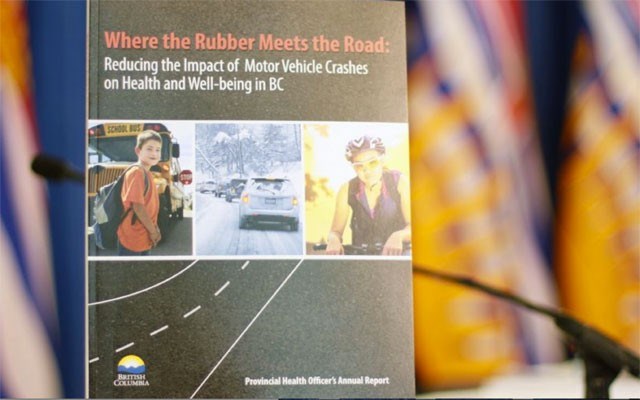A zero-tolerance alcohol policy for drivers under the age of 25 is one of several controversial recommendations by Provincial Health Officer Perry Kendall in an in-depth report on road safety meant to decrease the number of fatal accidents in B.C.
"Any preventable death or serious injury is unacceptable, including those that occur as the result of a motor vehicle crash," said Kendall in a prepared statement. "Though B.C. has seen a notable two-thirds decrease in motor vehicle crash fatalities since 1996, we could still achieve lower rates of fatalities and serious injuries."
The 260-page report, which took six years to complete and was released March 31, found that teenaged drivers are around 87 times more likely to be killed while driving with blood alcohol content (BAC) above the legal limit of 0.08 than a driver 30 or older who is sober. Drivers in their twenties were found to be 50 times more likely to be killed in a crash.
Staff Sgt. Steve LeClair, spokesman for the Whistler RCMP, said drinking and driving in a town with a sizable youth demographic remains a problem.
"Certainly we get a great number of people that we stop for different driving offenses and then we find out that they've been drinking," said LeClair. "A large number of that demographic is the 20-something that ends up getting a roadside suspension, either a 24-hour or a higher suspension."
LeClair pointed out the zero BAC policy is already a requirement for new drivers in the Graduated Licensing Program.
Kendall would also like to see the current speed limit of 50 km/h lowered to 30 within municipalities and on treaty lands, which he calls a "survivable speed" for cyclists and pedestrians, meaning they're unlikely to die if struck by a vehicle travelling that fast.
The report suggested harsher penalties for distracted driving, which now accounts for nearly a quarter of all deaths, and recommends the province brings back photo radar to combat speeding drivers, which was used in B.C. between 1996 and 2001. Kendall said the contentious program, which took photos of license plates electronically and sent tickets to car owners in the mail, likely contributed to a decrease in speed-related deaths during that period.
But Transportation Minister Todd Stone has put the brakes on the idea of bringing back photo radar.
"We believe that there are more effective technologies that can be employed and, frankly, better ways to utilize precious police resources than to resurrect what was largely a failed photo radar program that really was nothing more than a tax grab for British Columbians," he said in a conference call with reporters. He said the provincial government will review the recommendations, but suggested there would need to be municipal support to consider lowering speed limits.
"We wouldn't even think of doing any of that work if we don't have a strong endorsement to move in this direction from local government, which, to this point, is just simply not there," said Stone.
In 2013, the Union of B.C. Municipalities rejected a motion to ask the province to make 40 km/h the default speed limit in urban areas.
The city of Vancouver, however, introduced a 30 km/h limit in 2011 to a section of the Downtown Eastside notorious for jaywalking by people suffering from mental health and/or addictions issues.
The Sea to Sky Highway has seen the number of collisions drop by roughly a third since the completion of renovations made before the 2010 Olympics, according to Ministry of Transportation figures, with the annual average is now 156.




